|
I am a PhD candidate at the Chair of Visual Computing
(LGDV) at
FAU Erlangen-Nürnberg,
supervised by Prof. Marc Stamminger. I work at the intersection of computer vision, computer graphics, and machine learning. My research interests are focused on static and dynamic reconstruction using multiple modalities, in particular radar. Apart from theoretical research, I strive to apply my work to real-world scenarios such as medical applications. Before my Ph.D., I studied computer science at FAU Erlangen-Nürnberg and the IDSIA lab (Prof. Dr. Jürgen Schmidhuber) at USI in Lugano (Switzerland). My master thesis was supervised by Prof. Dr. Matthias Nießner at TU Munich. LinkedIn / Twitter / Github / Google Scholar / ResearchGate / Youtube |
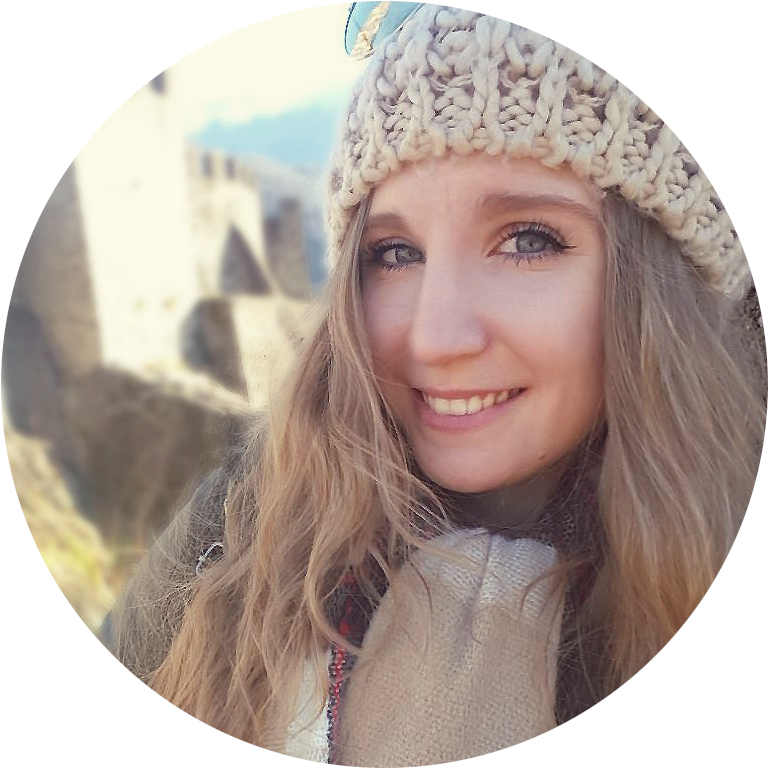
|
|
|
I'm interested in computer vision, computer graphics, machine learning, and novel sensor concepts. My primary application focus is within the medical domain. Representative papers are highlighted. |
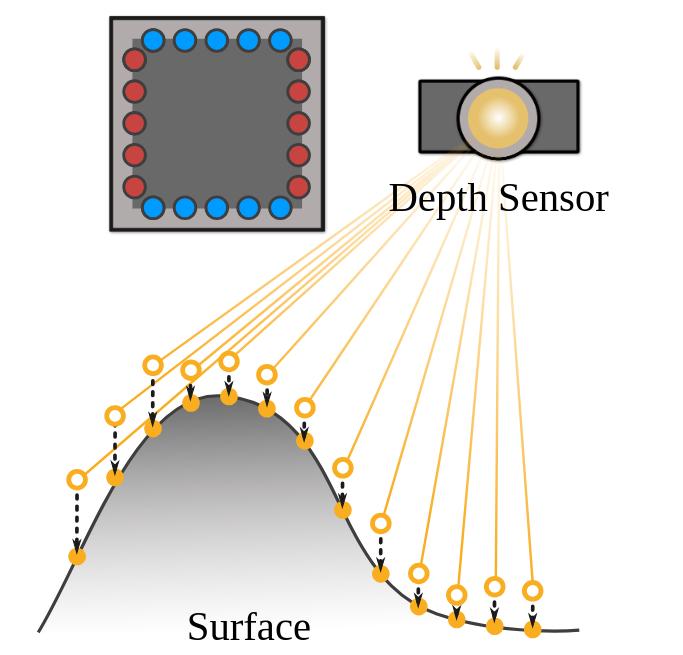
|
Vanessa Wirth, Johanna Bräunig, Martin Vossiek, Tim Weyrich, Marc Stamminger arXiv, 2025 [arXiv] We improve current limitations of high-speed radar-based depth estimation through multimodal sensor fusion. |
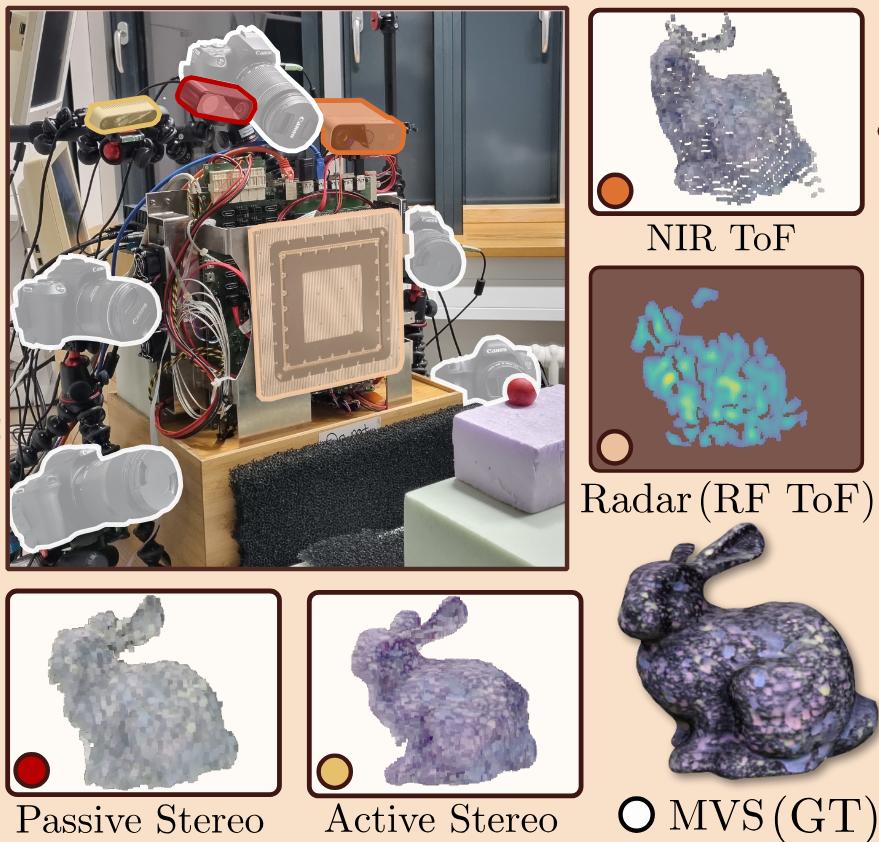
|
Vanessa Wirth, Johanna Bräunig, Nikolai Hofmann, Martin Vossiek, Tim Weyrich, Marc Stamminger arXiv, 2025 [Project Page] [arXiv] We present the first multimodal dataset that includes imaging radars, jointly calibrated with three different optical depth cameras, and a common ground truth. Using this dataset, we jointly investigate sensor characteristics, in particular those of imaging radars. We also show two example applications of our dataset. |
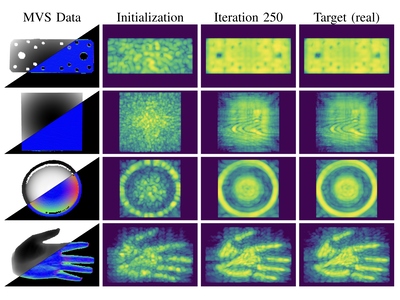
|
Nikolai Hofmann, Vanessa Wirth, Johanna Bräunig, Ingrid Ullmann, Martin Vossiek, Tim Weyrich, Marc Stamminger IEEE Journal of Microwaves, 2025 [Code] [Paper] We present a novel approach to inverse rendering for near-field MIMO radar systems, aimed at reconstructing material properties such as surface roughness, dielectric constants, and conductivity from radar and ground-truth mesh data. |
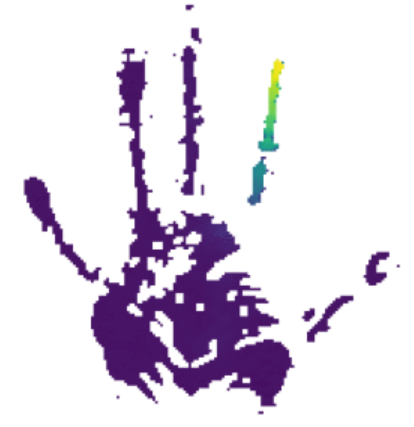
|
Johanna Bräunig, Simon Heinrich, Birte Coppers, Christoph Kammel, Vanessa Wirth, Marc Stamminger, Sigrid Leyendecker, Anna-Maria Liphardt, Ingrid Ullmann, Martin Vossiek IEEE Journal of Microwaves, 2024 [Paper] We propose a novel concept for high-resolution MIMO radars to track the pixel-wise velocity alongside the depth of human motions. |
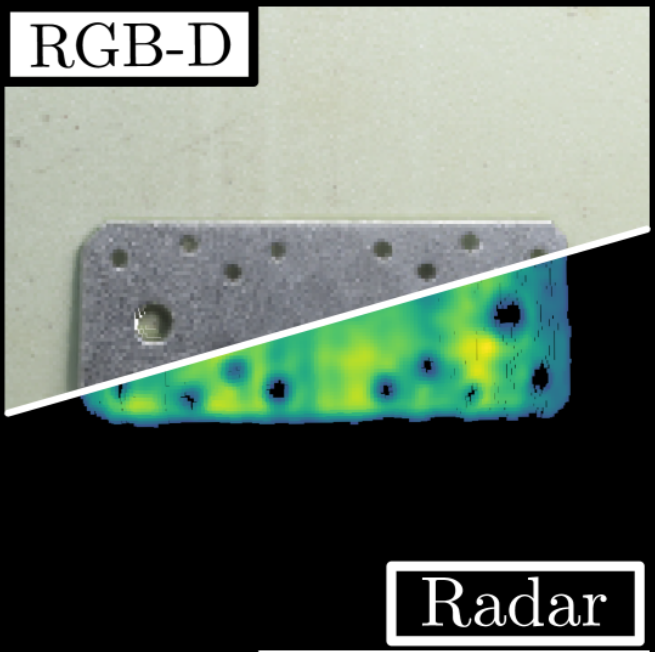
|
Vanessa Wirth, Johanna Bräunig, Danti Khouri, Florian Gutsche, Martin Vossiek, Tim Weyrich*, Marc Stamminger* IROS (Oral), 2024 [Project Page] [Paper] [arXiv] We propose a spatial calibration method for high-resolution radars that operate in the near-field, in conjunction with RGB-D cameras. Our calibration enables close-range sensor fusion applications with millimeter precision. |
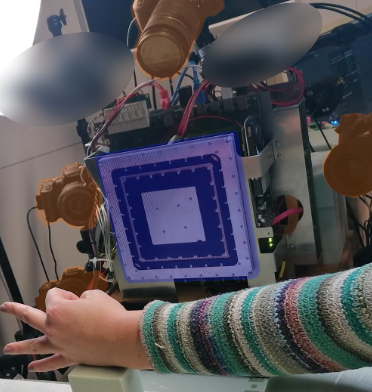
|
Johanna Bräunig, Vanessa Wirth, Marc Stamminger, Ingrid Ullmann, Martin Vossiek EuRAD, 2024 [Paper] [arXiv] We improve our previous work for SOTA Radar reconstruction by utilizing three carrier frequencies. The proposed method enables real-time reconstructions with improved quality. |
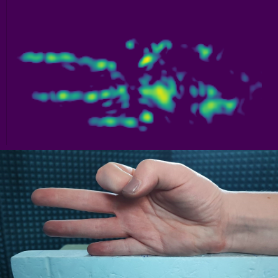
|
Johanna Bräunig, Christian Schüssler, Vanessa Wirth, Marc Stamminger, Ingrid Ullmann, Martin Vossiek EuRAD (Young Engineer Price), 2023 [Paper] [arXiv] We apply different material parameters to simulate the radar signal of a human hand using a Ray Tracing simulator. In this way, we can show that it is possible to generate very realistic simulations of radar data. |
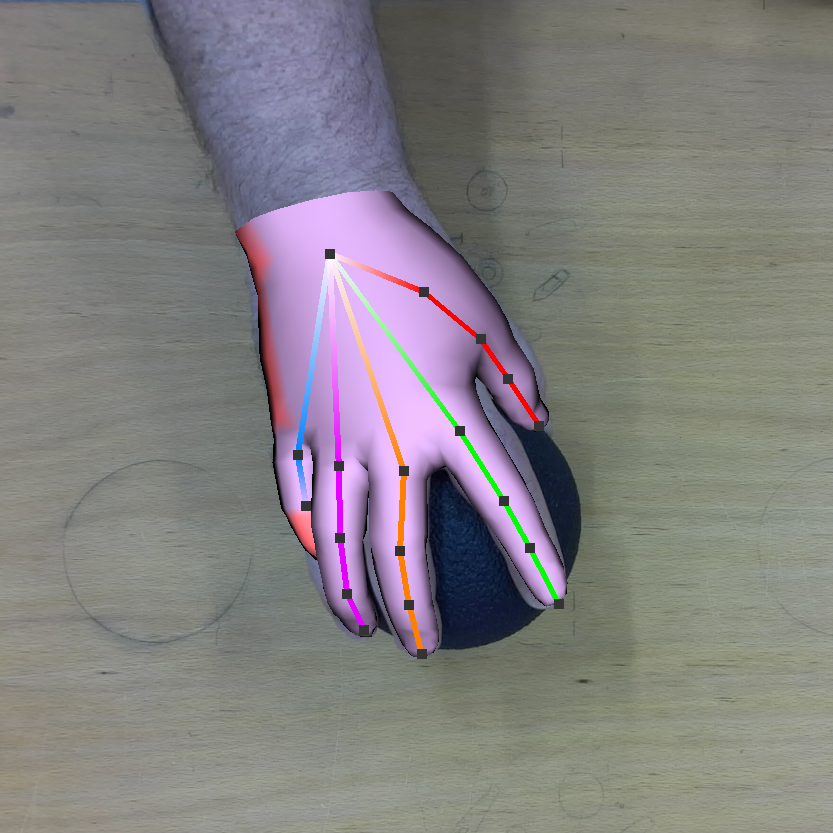
|
Vanessa Wirth, Anna-Maria Liphardt, Birte Coppers, Johanna Bräunig, Simon Heinrich, Sigrid Leyendecker, Arnd Kleyer, Georg Schett, Martin Vossiek, Bernhard Egger, Marc Stamminger ICCVW (Oral), 2023 Winner of the Digital Rheumatology Award 2024 [Project Page] [Paper] [arXiv] [Code] We propose a novel hand pose and shape tracking pipeline that calculates the uncertainty, which remains in the parameter estimates. We apply this pipeline to hand function assessments in the medical domain. |

|
Johanna Bräunig, Vanessa Wirth, Christoph Kammel, Christian Schüssler, Ingrid Ullmann, Marc Stamminger, Martin Vossiek IEEE Transactions on Radar Systems, 2023 [Paper] We improve the performance of current SOTA Radar Imaging methods by the approximation of possible surface locations and subsequent refinement operations. Our method works with only two carrier frequencies. |
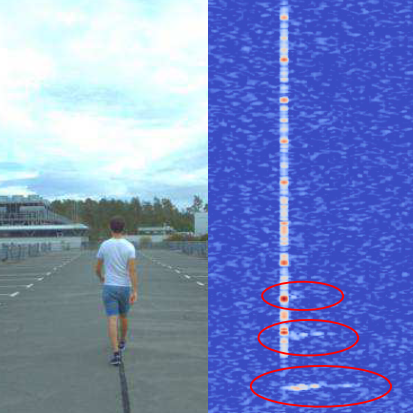
|
Christian Schüssler, Marcel Hoffmann, Vanessa Wirth, Björn Eskofier, Tim Weyrich, Marc Stamminger, Martin Vossiek IEEE RadarConf, 2023 [arXiv] We build on a realistic Range-Doppler radar signal simulator to automatically generate accurate ground-truth annotations for synthetic data. |
|
|

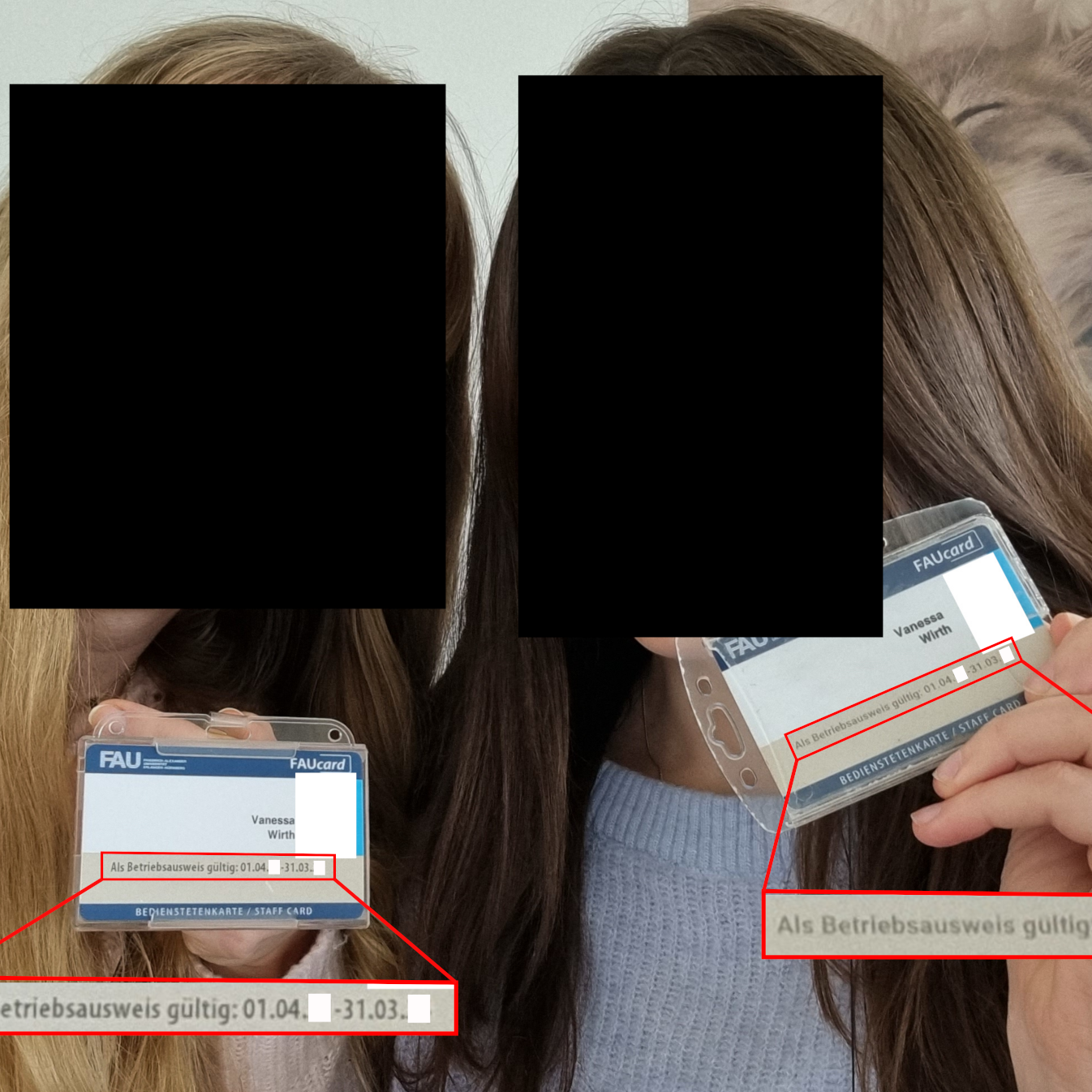
|
Vanessa Wirth, Vanessa Wirth SIGBOVIK, 2023 [Link] We investigate the phenomenon of Author-UnificAtion (AUA), which describes the high structural similarity of two co-authoring engineers that share the same forename, surname, institution, and academic career without being related by blood. |
|
The template of this website can be stolen from Jon Barron's source code. |